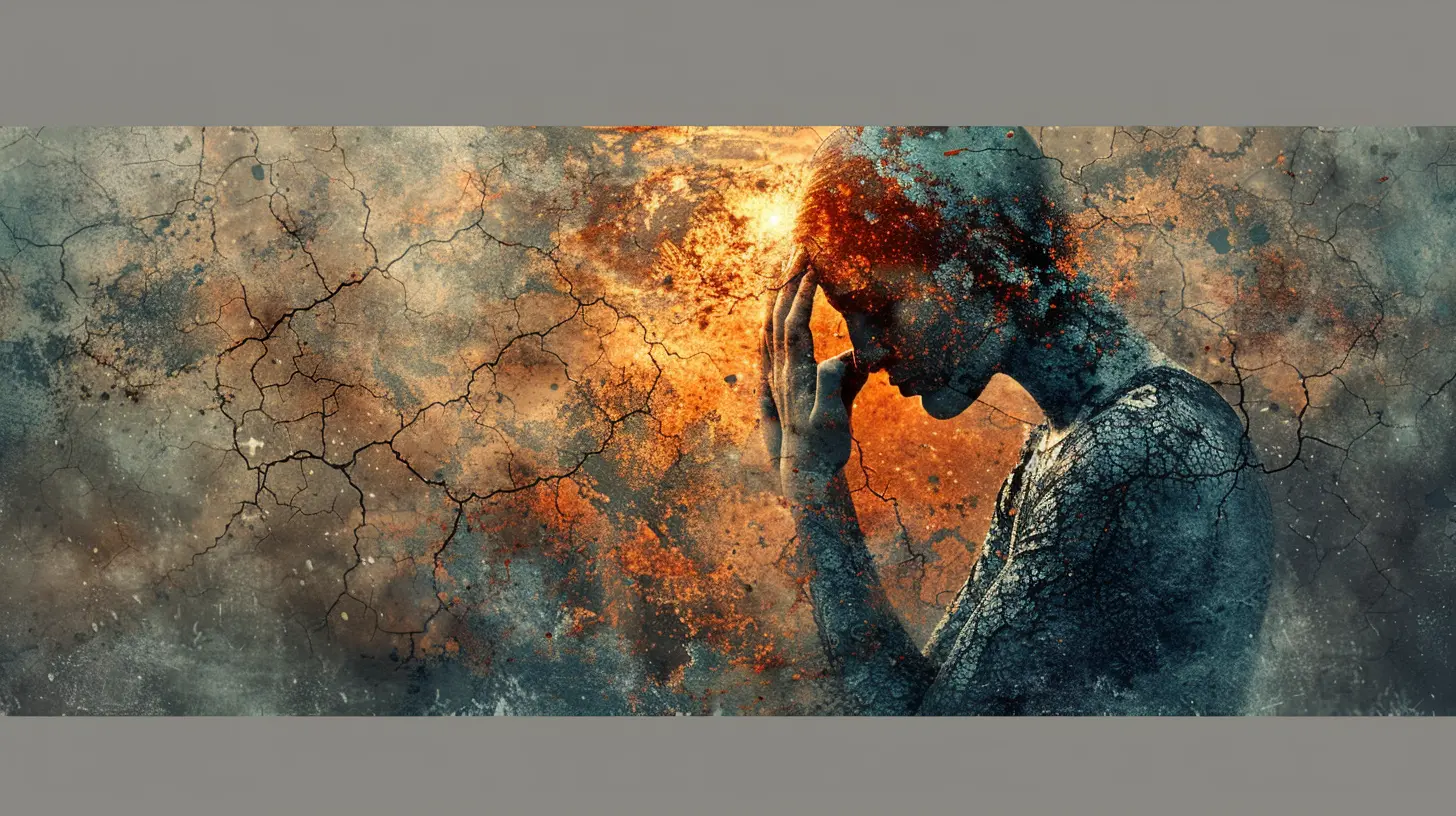How PTSD Affects Decision-Making and Problem-Solving
3 October 2025
Post-Traumatic Stress Disorder (PTSD) is a serious mental health condition that affects millions of people around the world. While it's widely known for its emotional and physical symptoms—like flashbacks, anxiety, and nightmares—its impact on cognitive functions often goes unnoticed. One of the most profound ways PTSD affects people is by disrupting their decision-making and problem-solving skills.
But why does PTSD make it so hard to think clearly and make choices? How does past trauma shape the way people approach everyday decisions? And what can be done to regain control? Let’s break it down.

Understanding PTSD and Its Cognitive Impact
PTSD develops after someone experiences or witnesses a traumatic event. This could be anything from military combat and car accidents to personal assaults or natural disasters. The brain, in an effort to protect itself, goes into a hyper-alert state, constantly scanning for danger.While this survival mechanism is helpful in life-threatening situations, it becomes problematic when it doesn’t turn off. Over time, this heightened state of alertness influences how the brain processes information, leading to difficulties in making decisions and solving problems.
The Brain Under PTSD: What’s Happening?
PTSD affects several key brain regions responsible for decision-making and problem-solving:1. Amygdala (The Alarm System) – This part of the brain controls fear and emotional responses. In PTSD, it's often overactive, making people react strongly to potential threats—real or perceived.
2. Prefrontal Cortex (The Rational Thinker) – This is responsible for reasoning, logical thinking, and impulse control. PTSD weakens its ability to function properly, making rational decision-making harder.
3. Hippocampus (The Memory Keeper) – The hippocampus processes memories and differentiates between past and present dangers. PTSD shrinks this area, causing difficulty in telling the difference between a past traumatic event and the present moment.
When these areas of the brain don’t work in sync, decision-making and problem-solving become frustrating, exhausting, and even overwhelming.

How PTSD Affects Decision-Making
1. Overreacting to Situations
People with PTSD often make decisions based on fear. Even when faced with minor choices, their brain interprets them as high-stakes situations. This leads to fight, flight, or freeze responses, where they may react impulsively, avoid decisions altogether, or feel paralyzed with indecision.For example, something as simple as choosing what to say in a conversation can feel like a huge challenge, especially if the person is afraid of conflict or misunderstanding.
2. Difficulty Weighing Pros and Cons
Decision-making usually involves evaluating options and determining the best course of action. However, PTSD can make this incredibly difficult. The brain becomes stuck in a negative feedback loop, where every decision feels risky or dangerous.For many, even everyday decisions like picking a restaurant or planning an event can feel overwhelming because their mind constantly jumps to worst-case scenarios.
3. Impulsivity and Risky Decisions
On the flip side, some people with PTSD experience impulsivity—making rash decisions without fully thinking them through. This is often because they want to escape uncomfortable emotions or anxiety quickly.For example, someone with PTSD may suddenly quit a job or end a relationship without considering the long-term consequences, simply because staying in the situation feels unbearable.
4. Avoidance and Procrastination
Since making decisions can be stressful, many people with PTSD resort to avoidance. They may delay decisions, ignore responsibilities, or let others make choices for them. While this provides short-term relief, it often leads to bigger problems down the line.For example, avoiding financial decisions may result in missed payments and financial stress, creating a cycle that worsens anxiety.

How PTSD Affects Problem-Solving
1. Cognitive Exhaustion
Problem-solving requires focus, patience, and the ability to analyze different solutions. But PTSD keeps the brain in a constant state of mental fatigue. Over time, this exhaustion makes it harder to break down problems logically.Think of it like trying to solve a puzzle while running a marathon—your brain is already working overtime just trying to stay alert, leaving little energy for complex thinking.
2. Negative Thought Patterns
PTSD often comes with self-doubt and negative thinking, which directly impacts problem-solving. Many people believe they’re "not capable" of handling tough situations or assume there's no solution to their problems.This mindset can make even small challenges feel impossible, leading to frustration and a sense of helplessness.
3. Emotional Interference
Strong emotions like fear, anger, or sadness can cloud judgment, making it difficult to approach problems rationally. PTSD causes heightened emotional responses, which means even minor setbacks can feel like personal failures.For example, someone struggling with PTSD at work may interpret a simple mistake as proof that they’re incompetent, instead of seeing it as a normal learning experience.

Strategies to Improve Decision-Making and Problem-Solving with PTSD
While PTSD presents real challenges, there are ways to regain control over decision-making and problem-solving skills. Here are some practical strategies:1. Practice Mindfulness and Grounding Techniques
Mindfulness helps bring the brain back to the present moment, reducing the impact of past trauma on current decisions. Grounding exercises, such as deep breathing or focusing on your surroundings, can help calm the brain and make decision-making feel less overwhelming.2. Break Down Decisions into Smaller Steps
Instead of looking at decisions as one large, intimidating choice, break them down into smaller steps. Ask yourself:- What is the immediate decision I need to make?
- What are my options?
- What’s the worst that could happen?
Taking decisions one step at a time prevents the brain from feeling overloaded.
3. Challenge Negative Thought Patterns
When faced with a decision, pay attention to negative thoughts like "I always mess up" or "I’ll never figure this out." Instead of accepting these thoughts as truth, challenge them with evidence.Remind yourself of past situations where you successfully made a decision or solved a problem.
4. Use a “Pros and Cons” List
Writing out the advantages and disadvantages of a decision helps bring clarity. Visually seeing the options laid out can reduce emotional overwhelm and provide a more balanced perspective.5. Seek Support
Having a trusted friend, therapist, or family member to talk through decisions can be incredibly helpful. Sometimes, an outside perspective helps highlight options that may not be immediately obvious.6. Give Yourself Permission to Take Time
Not every decision needs to be made immediately. If possible, give yourself time to think through choices instead of rushing into them based on fear or anxiety.7. Professional Therapy and Treatment
Cognitive Behavioral Therapy (CBT), Eye Movement Desensitization and Reprocessing (EMDR), and medication can all help regulate PTSD symptoms, making decision-making and problem-solving easier over time.Final Thoughts
PTSD doesn’t just affect emotions—it changes how the brain processes information, making decision-making and problem-solving feel incredibly difficult. From impulsivity and avoidance to cognitive exhaustion, the struggles are real. But the good news? With the right strategies, support, and treatment, it’s possible to regain confidence in making choices and overcoming challenges.If you or someone you know is dealing with PTSD-related cognitive difficulties, remember: small steps lead to big progress. Healing takes time, but with patience and persistence, it’s absolutely achievable.
all images in this post were generated using AI tools
Category:
Post Traumatic Stress DisorderAuthor:

Janet Conrad
Discussion
rate this article
1 comments
Ashira Mitchell
This article insightfully highlights the intricate relationship between PTSD and cognitive processes. By impairing emotional regulation and increasing anxiety, PTSD significantly impacts decision-making and problem-solving abilities. Understanding these effects is crucial for developing targeted interventions that can help individuals navigate daily challenges more effectively, ultimately enhancing their quality of life.
October 13, 2025 at 3:08 PM

Janet Conrad
Thank you for your thoughtful comment! I'm glad you found the insights on PTSD's impact on cognitive processes and decision-making valuable. Understanding these connections is indeed vital for effective interventions.


